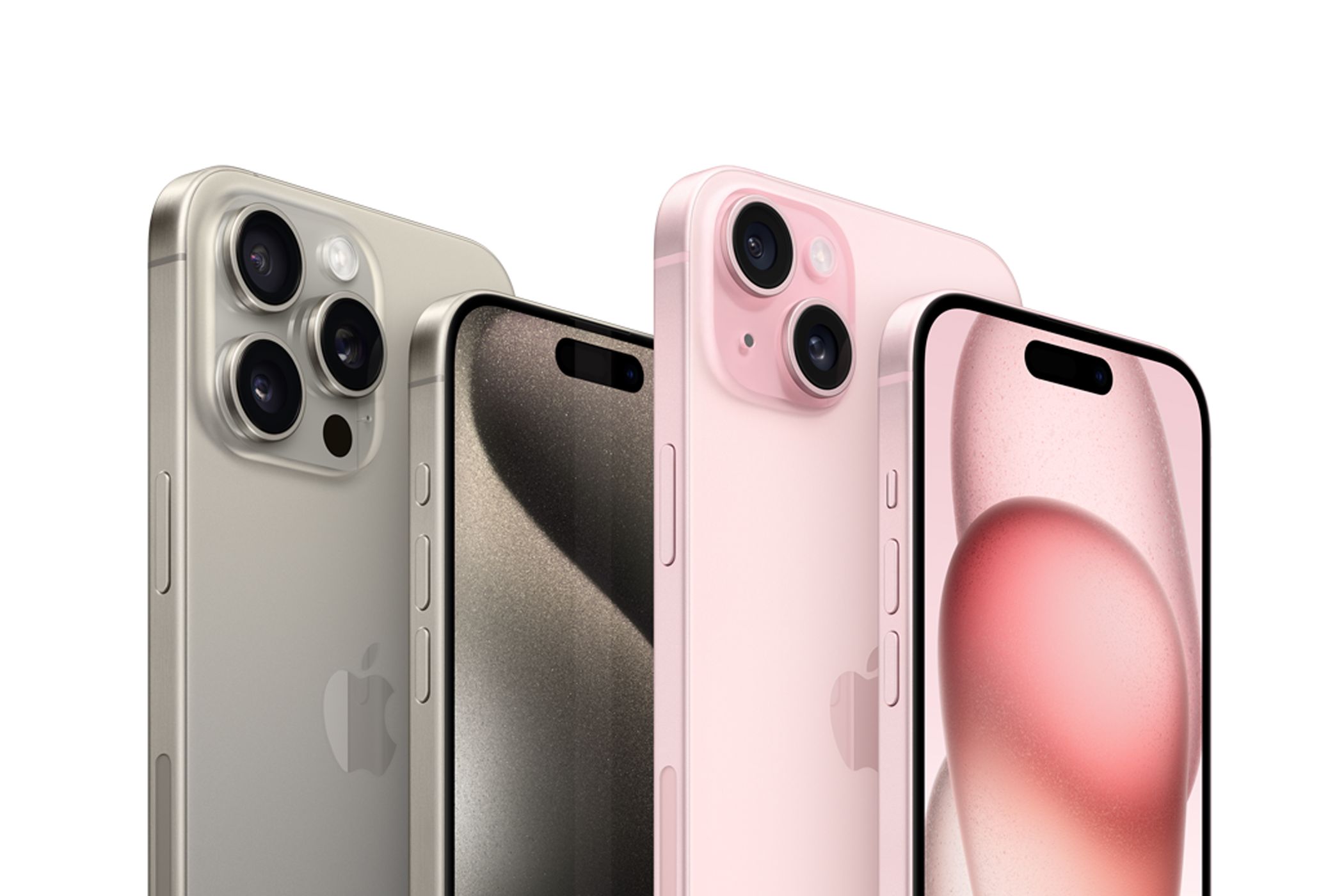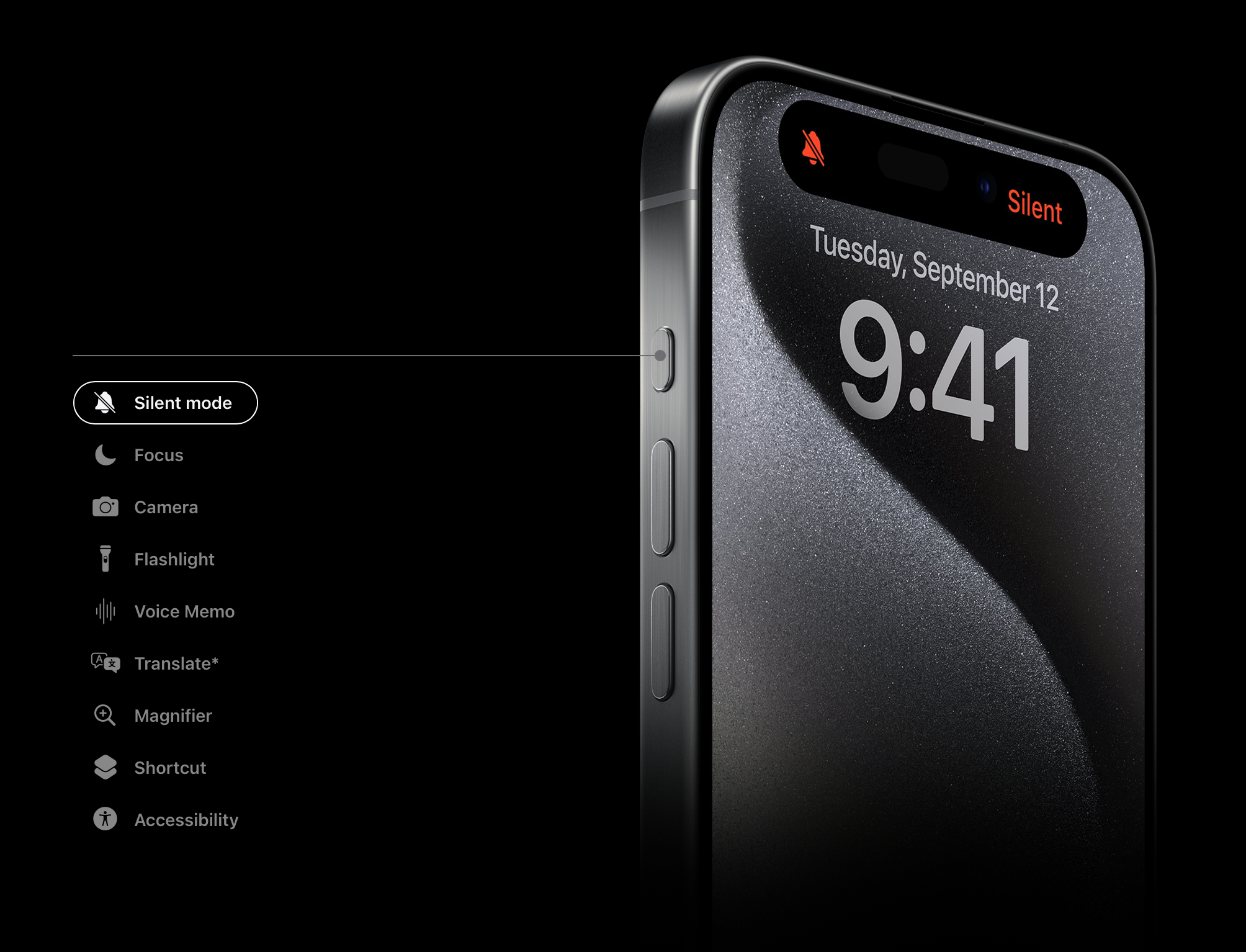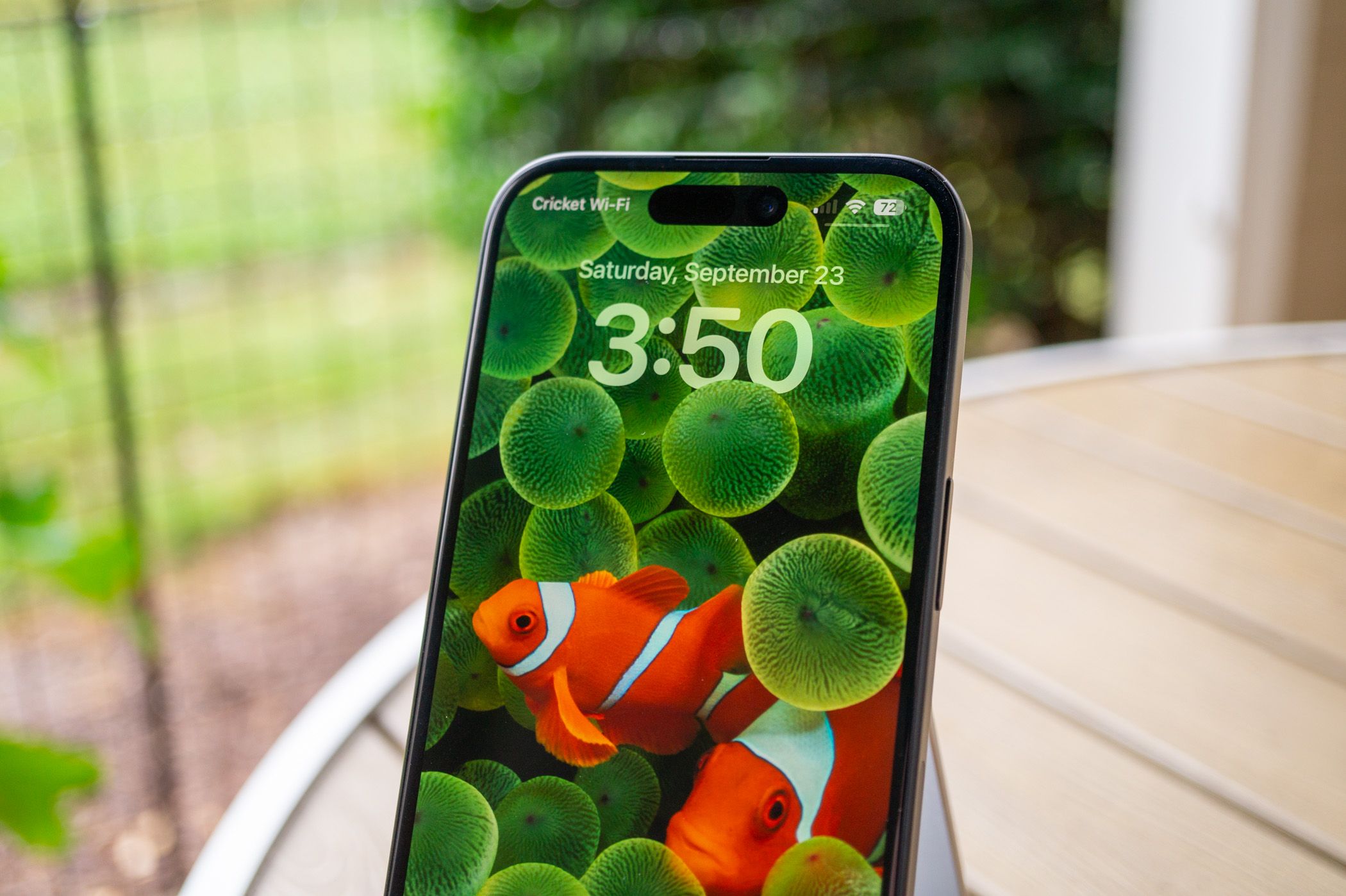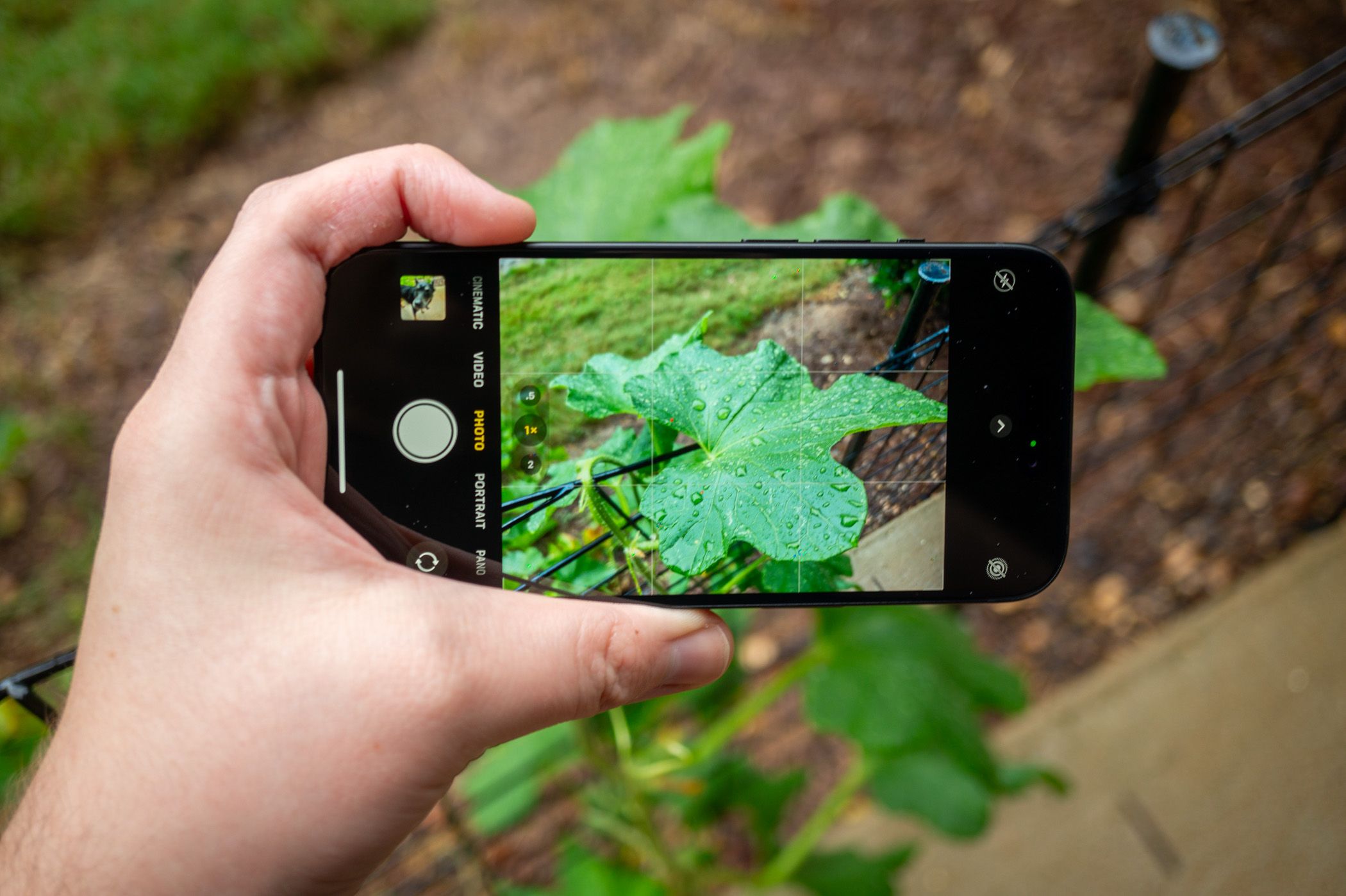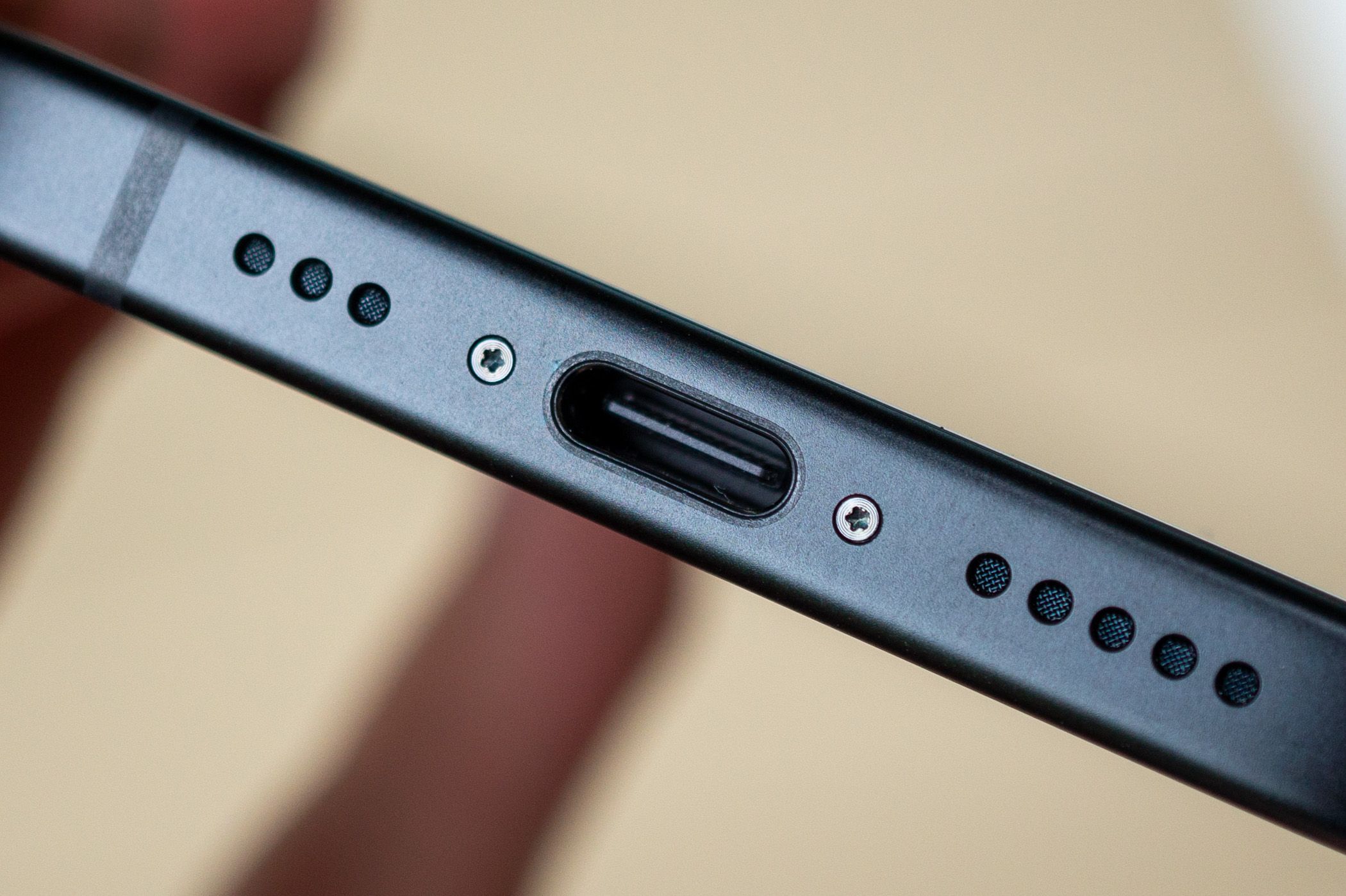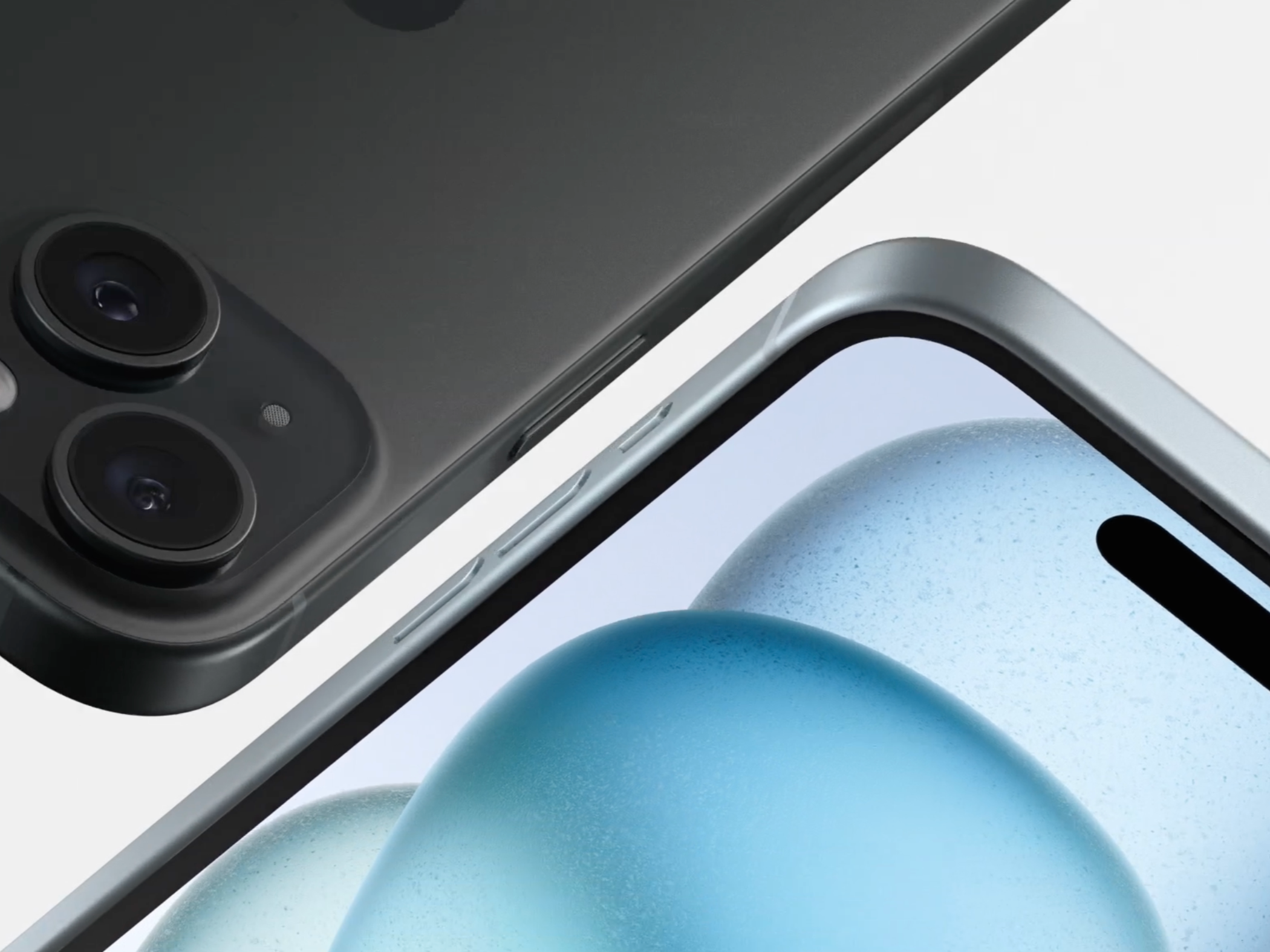
You’re considering upgrading to the recently released iPhone 15 lineup, but you’re not sure if you should go for the iPhone 15 or the iPhone 15 Pro. Here’s what you get with both phones and what the premium Pro upgrade offers.
From performance and camera capabilities to design and pricing, we’re digging into every difference so you can pick the best phone for your needs and your budget.
iPhone 15 vs. iPhone 15 Pro: Specs Breakdown
Let’s open our examination with a specification breakdown. Maybe right out of the gate, you’ll see a feature that seals the deal for you. If you want the new always-on display or a 3x telephone lens, for instance, there’s no contest—the iPhone 15 Pro upgrade is a given. Likewise for the shiny new Action Button. Conversely, even if you stick with the regular iPhone 15, it’s still the biggest iPhone upgrade in years.
|
iPhone 15 |
iPhone 15 Pro |
|
|---|---|---|
|
Colors |
Pink, Yellow, Green, Blue, and Black |
Natural Titanium, Blue Titanium, White Titanium, and Black Titanium |
|
Body Material |
Aluminum with color-infused glass back |
Titanium with textured matt glass back |
|
Display Size and Technology |
6.1-inch (diagonal) all-screen OLED display |
6.1-inch (diagonal) all-screen OLED display |
|
Dynamic Island |
Yes |
Yes |
|
Refresh Rate |
60Hz refresh rate |
120Hz ProMotion |
|
Always-On Display |
No |
Yes |
|
Resolution and Pixel Density |
2556 x 1179, 460 ppi |
2556 x 1179, 460 ppi |
|
Brightness |
1,000 nits max brightness (typical), 1,600 nits peak brightness (HDR), 2,000 nits peak brightness (outdoor) |
1,000 nits max brightness (typical), 1,600 nits peak brightness (HDR), 2,000 nits peak brightness (outdoor) |
|
Cameras |
48MP Main and 12MP Ultra Wide (up to 2x optical) 12MP front |
48MP Main, 12MP Ultra Wide and 12MP Telephoto (up to 3x optical) 12MP front |
|
RAM/Storage |
6/128GB, 6/256GB, 6/512GB |
8/128GB, 8/256GB, 8/512GB, 8/1TB |
|
Dimensions (inches) |
2.82 x 5.81 x 0.31 in. |
2.78 x 5.77 x 0.32 in. |
|
Dimensions (millimeters) |
71.6 x 147.6 x 7.8 mm |
70.6 x 146.6 x 8.25 mm |
|
Weight |
171 g (6.02 oz) |
187 g (6.6 oz) |
|
Splash, Water, and Dust Resistance |
Rated IP68 (maximum depth of 6 meters up to 30 minutes) |
Rated IP68 (maximum depth of 6 meters up to 30 minutes) |
|
Processor |
A16 Bionic chip (6-core CPU, 5-core GPU, 16-core Neural Engine) |
A17 Pro chip (6-core CPU, 6-core GPU, 16-core Neural Engine) |
|
Battery and Charging |
3,349mAh – up to 20 hours of video playback (16 hours streamed) |
3,274mAh – up to 23 hours of video playback (20 hours streamed) |
|
Connector |
USB-C Supports USB 2 (up to 480Mbps) |
USB-C Supports USB 3 (up to 10Gbps, 20x faster) |
|
Side Button or Switch |
Ring/Silent switch |
Action button |
|
Price |
Starts at $799 |
Starts at $999 |
If you’re a study-the-charts kind of person, that might be all the information you need. But if you want a further analysis, we’re happy to oblige. Let’s examine some key distinctions between the two phones and how they might influence your upgrade path.
Design and Build: New Colors, New Materials
Immediately noticeable is the fundamental difference in body materials. The iPhone 15 has an aluminum frame with a color-infused glass back, whereas the iPhone 15 Pro is made from titanium and has a textured matte glass back. Maybe that doesn’t matter much to you if you’re destined to cover it up with a case, but a lot of iPhone fans are quite excited about the titanium build.
On the topic of colorways, the iPhone 15 offers a wide range of vibrant choices, including Pink, Yellow, Green, Blue, and the classic Black. On the other hand, the iPhone 15 Pro has a more subtle color palette coming in four titanium finishes: Natural Titanium, Blue Titanium, White Titanium, and Black Titanium. Natural Titanium was a clear runaway hit, as it sold out almost immediately, with September pre-orders facing delivery delays stretching well into November.
In terms of the overall weight, while the iPhone 15 experienced a minor weight reduction, the iPhone 15 Pro has become approximately 10% lighter thanks to the new material. It’s the first iPhone to feature an aerospace-grade titanium design, making it the lightest Pro model ever. You’ll immediately feel the difference the moment you hold it in your hand. Plus, titanium is not only lighter but also more durable. So, if you want a sturdier build and premium materials, opting for the Pro model is the ideal choice.
But keep in mind that although titanium is lighter than aluminum, the iPhone 15 Pro still weighs more than the iPhone 15. The iPhone 15 weighs 171 grams (6.02 ounces), lighter than its predecessor for sure but still heavier than the iPhone 15 Pro, which is 187 grams (6.6 ounces).
Another exclusive feature only available on the iPhone 15 Pro models is the addition of the Action Button. It replaces the mute switch that still can be found on the side of the iPhone 15. As far as basic interface changes go, this is a pretty big deal. What was previously a switch few people ever used is now a versatile button.
By default, a long press of the Action button serves as a mute/unmute control. But it also offers customization options for triggering various shortcuts like: activating the flashlight, recording a voice memo, and launching the camera app.
Display Technology: The 15 Pro Offers Notable Upgrades
Both the iPhone 15 and iPhone 15 Pro models have the same Super Retina XDR display, 6.1-inch all‑screen OLED display, 2556 x 1179 pixel resolution at 460 ppi, 2,000 nits peak brightness outdoors, and the Dynamic Island cutout.
However, there are some features that favor the Pro models over the vanilla iPhone 15.
The iPhone 15 Pro’s display features smaller bezels and ProMotion technology. It has a variable refresh rate between 10Hz and 120Hz, offering a smooth experience when watching YouTube videos, playing games, or simply browsing the web. This surpasses the fixed 60Hz refresh rate of the iPhone 15. Furthermore, when you’re not engaged in any activities, the Pro intelligently reduces the refresh rate to conserve battery life.
Lastly, the iPhone 15 Pro also offers an Always-On Display, a feature that is absent in the iPhone 15.
Camera Capabilities: Your Photos Will Be Sharper Than Ever
This year, Apple has increased the resolution of the primary camera in the standard iPhone 15 – nearly aligning it with the camera capabilities of the iPhone 15 Pro models.
The iPhone 15 is equipped with a dual-camera configuration featuring a 48MP wide lens and a 12MP ultrawide lens. The wide lens supports sensor-shift stabilization for enhanced image quality. The iPhone 15 Pro boasts a triple-camera setup consisting of a 48MP wide lens, a 12MP ultrawide lens, and a 12MP telephoto lens with 3x optical zoom.
The front-facing camera hardware remains unchanged for yet another year. Both phones feature a 12MP camera with autofocus support as the default configuration.
The two devices also come with several new software enhancements, including the next-generation Portrait mode with Focus and Depth Control and Smart HDR 5. Night Mode is supported on both models, but only the iPhone 15 Pro lets you capture night mode shots in portrait mode.
Performance and Processing Power: The Pro Takes the Lead
Moving deeper into the phone we can take a peek at the hardware. The iPhone 15 has an A16 Bionic chip, while the iPhone 15 Pro has a new A17 Pro chip.
According to Apple, the A17 Pro delivers a 10% boost in CPU performance and a 20% improvement in GPU performance. They claim it achieves 4x faster ray tracing than A16 Bionic due to its new hardware-accelerated ray tracing.
Moreover, it can generate high‑resolution graphics while consuming much less power. This can allow you to have extended gaming sessions without worrying about battery life.
Battery Life and Charging: USB-C for Everyone
While Apple doesn’t advertise battery capacities for the iPhone 15 series, they do have to submit regulatory filings. According to the data in such filings, the iPhone 15 has a 3,349mAh battery (rated capacity) and a wattage of 12.981Wh, while the iPhone 15 Pro has a 3,274mAh battery and a wattage of 12.70Wh.
It might not advertise the exact capacity of the battery, but Apple certainly advertises how long it thinks the battery will last—the iPhone 15 can deliver up to 20 hours of video playback, while the iPhone 15 Pro extends this to 23 hours. For the audio playback, the standard iPhone 15 takes the lead. According to Apple’s figures, it offers an estimated 80 hours of playback time, which is five hours longer than the iPhone 15 Pro’s estimated 75 hours.
When it comes to charging speeds, both iPhone 15 and iPhone 15 Pro can charge up to 50% in 30 minutes with a 20W adapter or higher. Both devices also support 15W MagSafe and 7.5W Qi wireless charging. But the star of the show here is USB-C.
The new USB-C charging is available across all iPhone 15 models, a complete departure from the lightning port. But it’s important to note that only the iPhone 15 Pro offers support for the faster 10Gbps speeds of USB 3. And to benefit from these higher speeds on the 15 Pro, you’ll have to get your own USB-C 3 cable, as Apple includes a USB 2 cable with both phones. Meanwhile, the iPhone 15 is limited to USB 2 speeds of 480Mbps.
Pricing and Storage Options: The 256GB Sweetspot Sure Is Compelling
Comparing features is great, but at the end of the day, there’s always the consideration of cold-hard cash and how much hardware and storage you get for that cash.
The base price of the standard iPhone 15 begins at $799 for 128GB of storage and climbs to $899 (256GB) and $1,099 (512GB) as the storage capacity climbs. There is no 1TB option for the iPhone 15.
Similar to previous years, Apple priced the iPhone 15 Pro at a premium of $200 over the iPhone 15. The iPhone 15 Pro pricing starts at $999 for 128GB of storage, with additional storage tiers and pricing at $1,099 (256GB), $1,299 (512GB), and a final top tier of $1,499 (1TB).
For most people, 256GB offers a sweet, especially when combined with iCloud storage. There’s enough room for a lot of apps, a lot of photos, and quite a bit of video storage without feeling too cramped (and without paying for a lot of space you may not actually fill up).
Is the Pro Model Worth the Additional Cost?
THe iPhone 15 Pro offers some enticing upgrades over the base model iPhone 15. But ultimately, the choice comes down to your personal preferences and priorities. Consider your usage patterns when deciding whether the iPhone 15 Pro is worth the upgrade price over the iPhone 15.
If you want the latest technology to play around with and enjoy, or you demand superior display quality for tasks like video editing or gaming, the Pro model is the go-to choice. Also, if advanced photography capabilities are crucial for your creative pursuits or personal use, the Pro’s enhanced camera system could be a game-changer. The step up from the two-lens to three-lens arrangement is a game changer.
On the other hand, the iPhone 15 delivers an excellent smartphone experience at a more budget-friendly price. If you’re okay with a slightly lower refresh rate and a more modest camera setup, you’ll still appreciate top-notch performance and reliability.
Further, ask yourself if you’re willing to pay more for a USB-C connection that has a much faster transfer speed? If you’re just looking for the convenience of USB-C charging, but don’t need the faster transfer speed, there’s no need to upgrade. Is the additional utility of an action button a must-have for your daily tasks, or can you work around it? It sure is tempting to have a flashlight, camera, or shortcut trigger right there on the frame of the phone but we all lived without it until now and maybe you can live without it a little longer in service of saving some money.
Really want to mull over your decision? A little extra input never hurt. Check out our iPhone 15 and iPhone 15 Pro reviews for some hands-on opinions. And if you’re not as much debating which iPhone 15 model to upgrade to but whether or not upgrading from your older iPhone is worth it or not, do check out our breakdown of the benefits you get jumping to the iPhone 15 from older models.
Finally, if you’re on the fence don’t forget about trade-in value. Turning in an old phone but still relatively recent model phone (iPhone or otherwise) can shave hundreds of dollars off the cost of your iPhone upgrade. If you can get $200 or more for your trade-in, it’s certainly less of a debate as to whether or not you should upgrade!

